Exploring the Essentials of Digital Marketing
The terms digital marketing and digital marketers are often confused. While they are closely linked and share certain functions, they are fundamentally different: digital marketing is the discipline, whereas a digital marketer is the person carrying out that discipline. Just as business is not the same as a businessman, marketing is different from the marketer.
Digital marketing encompasses all online marketing activities, executed through web-enabled platforms and digital services. It covers a wide spectrum, ranging from website creation and development to promoting products and services. Despite its event-like or campaign-based nature, digital marketing is a continuous cycle of structured communication designed to achieve sales targets. Underlying this discipline is the synthesis of data and marketing science.
Defining Digital Marketing
Much has been said about what digital marketing means. The most comprehensive definition is that digital marketing is the marketing of products or services using digital media. Digital marketing methods utilize digital technologies and platforms such as Search Engines (Google, Bing, Yahoo), Search Engine Marketing portals (Practo, MakeMyTrip), Social Media and Social Media Marketing platforms (Facebook, Instagram, LinkedIn), Display Networks (Google Display Network, AdSense Network) and Email. In simpler terms, digital marketing means marketing through the internet or the World Wide Web.
Digital marketing has gained immense importance due to the exploding usage of the world wide web and electronic media. Digital marketing strategies are focused on the following objectives: increasing employee brand engagement and leadership, promoting sales through improved lead generation initiatives, brand building, building social media communication channels and providing round-the-clock customer support.
Key Components of Digital Marketing
In order to understand the essence of digital marketing, it is important to acquaint oneself with the following key terms:
Digital platform — any place on the web or Internet where the users gather and share information act as digital platforms like Google, YouTube, Facebook, LinkedIn, Twitter, Pinterest, Instagram, Snapchat, WhatsApp etc. Digital channels — paid, earned and owned media are the digital channels to connect, engage and convert the audience. Time spent by audience (attraction) and number of unique users (traffic) constitute the digital traffic. Digital marketing tools — various application like Google Analytics, Facebook Ads, Google Ads etc that help marketers connect with the audience on the platform jointly termed as digital tools.
Digital marketing has become important because the marketing environment has changed. Customised products and services, specially developed keeping in mind the individual taste and preferences are more common now. Today, any business needs to be present where its audience is available. More number of audiences are spending more and more time on digital platforms — and thus, business wants to be where their customers are.
Together, digital marketing allows marketers to effectively engage with the customers at any stage of their journey — awareness, consideration or decision — connect with them right on their path and become their support system in completing their purchase. Most important is the fact that marketing on digital platforms is more cost-effective, measurable and it allows marketers to precisely target the audience based on behaviour, demographics, geography, lifestyles and interests. Data plays a critical role in digital marketing.”
Importance of Digital Marketing in Today’s World
Digital marketing is currently an essential tool for businesses of all kinds. The internet has become a more critical weapon for global companies; for smaller companies, it can be the only weapon they need. They are all fighting to have the most successful merchandise in the world, but it is also crucial to use the correct methods of advertising.
Like every marketing department, everything is designed to target the audience: promoting new products and ideas and distributing information to the people who might want to buy products or services. The first and primary aim of any marketing campaign is to attract the audience and then to keep it engaged one’s brand and introducing new offers and items.
Who is a Digital Marketer?
Digital marketing refers to the discipline of marketing products or services using digital technologies, mainly on the Internet but also including mobile phones, display advertising, and any other digital medium. In essence, digital marketing applies the principles of traditional marketing, advertising, and public relations from the offline environment to the online one, creating a new playing field for businesses, brand managers, agencies, and marketing professionals. It has become an essential tool for businesses, particularly in a world where more users spend increasing amounts of their time in front of screens.
The digital marketer takes the principles of marketing, advertising, and public relations and applies them in the online context using digital ways and means. The role of a digital marketing professional is to increase the demand and visibility of products and services among the targeted group of customers and clients through digital platforms. Digital marketers handle the online image and reputation of companies and organizations, leveraging digital marketing strategies—such as content marketing, social media marketing, search engine optimization (SEO), pay-per-click (PPC) advertising, and email marketing—to meet these objectives.
Roles and Responsibilities of a Digital Marketer
Digital marketing is a vast field that encompasses multiple sub-domains. Professionals specializing in one or more of these areas are often referred to as digital marketers. Different working roles require distinct expertise. For example, a person mainly tasked with creating engaging content across various social platforms would typically be called a social media content writer, whereas someone focused on optimizing website rankings would be known as an SEO specialist.
Digital marketers must possess diverse skills that vary depending on their specialization. However, certain fundamental competencies are universally beneficial. Engagement in strategy planning, content creation, PPC campaign management, email marketing, and affiliate or influencer collaborations all necessitate proficiency across these areas.
Skills Required for Digital Marketing Professionals
Digital marketing has become essential to practically all business organizations across the globe. A digital marketer needs to understand the dynamics of digital marketing and be able to effectively formulate and implement digital marketing strategies. Various industry use cases highlight the importance of digital marketing and the critical role that digital marketers play in these endeavors. Digital marketing is also an evolving area of business that presents expanding career opportunities for business professionals.
Dynamics of digital marketing include setting objectives and budgets; conducting audience segmentation, competitor analysis, and keyword research; preparing content marketing, social media marketing, and SEO strategies; and optimizing the customer journey across all digital platforms. Characteristics of an ideal digital marketing team include versatility, adaptability, and creativity. The responsibilities of a digital marketing professional encompass managing online presence and performance, analyzing search traffic, building backlinks, content marketing, and email marketing, as well as creating and managing social media accounts.
Digital Marketing Strategies
Digital marketing strategies refer to specific approaches and techniques employed by organizations to achieve their digital marketing goals. There are several strategies or goals of digital marketing, including content marketing, social media marketing, search engine optimization (SEO), pay-per-click (PPC) advertising, and email marketing.
Content marketing focuses on creating and distributing valuable, relevant, and consistent content to attract and engage a target audience. This can include blog posts, articles, videos, infographics, and other forms of digital content. Social media marketing involves using social media platforms such as Facebook, Twitter, Instagram, LinkedIn, and others to promote products or services, engage with the audience, build brand awareness, and drive traffic to the website or other digital assets. SEO aims to enhance the visibility of a website or online content in search engine results pages (SERPs) by optimizing the website structure, content, and backlinks for relevant keywords and search queries. PPC advertising entails placing ads on various digital channels like search engines, social media platforms, or other websites and paying only when someone clicks on the ad; popular platforms for PPC campaigns include Google Ads, Bing Ads, Facebook Ads, and LinkedIn Ads. Email marketing utilizes emails to communicate directly with customers or prospects, promoting offers, sharing updates, nurturing leads, or encouraging repeat business.
Content Marketing
Content marketing serves as a foundation. The aim is always to develop useful information that resonates with the identities of the brand and its consumers. The more users are helped and engaged, the more traffic and potential leads are generated. Social media marketing leverages social media channels to cultivate an active community and progressively convert this engagement into customers. Search Engine Optimization (SEO) concentrates on increasing both the quantity and quality of websites to elevate ranks in Google and other search engines. Paid advertising encompasses the use of paid ads, commonly known as pay-per-click (PPC) ads or SEM.
Email marketing represents the practice of sending commercial messages to a list of contacts with the goal of developing a relationship and converting subscribers into customers. The differences between digital and traditional marketing underscore that digital marketing is generally more cost-effective, offers potential accessibility to a broader target audience, and allows for easier measurement of activities. The critical role of data in digital marketing facilitates informed decision-making and customer segmentation. Receiving messages tailored to an individual’s identity and preferences not only generates value and fosters a closer connection with the brand but also enhances the overall customer experience. By alleviating the time, effort, and brainpower associated with searching for products, digital marketing contributes to higher levels of satisfaction.
Social Media Marketing
Social media marketing is the utilization of social media platforms and websites to promote a product or service. Although the terms e-marketing and digital marketing are still dominant in academia, social media marketing is becoming more popular both for practitioners and researchers. Most social media platforms have built-in data analytics tools, enabling companies to track the progress, success, and engagement of ad campaigns. Companies address a range of stakeholders through social media marketing, including current and potential customers, current and potential employees, journalists, bloggers, and the general public. In Q2 of 2019, Facebook, Instagram, WhatsApp, and Messenger had more than 2.5 billion active users combined.
It is also becoming increasingly difficult for individual voices to be heard amidst the noise of millions of posts and comments. Businesses, therefore, engage influencers to become brand advocates who are able to grasp the audience’s attention for them. Social media advertising involves paying social media networks to advertise a product or service. The methods and standards vary among each network and are subject to change.
Search Engine Optimization (SEO)
A key component of digital marketing, search engine optimization (SEO) is the process, including the techniques, guidelines, and best practices, used by sites to be indexed and to rank highly in the organic or natural search results of major search engines. The main aim of an SEO strategy is to drive traffic from search engines. Content Marketing and Search Engine Optimization work hand-in-hand to achieve this objective. The main difference between SEO and pay per click (PPC) advertising lies in the fact that SEO is free organic digital marketing, whereas businesses have to pay for advertisements shown on Google Search results or on any other search engines.
Whether a business should go for SEO or PPC depends primarily on the business objectives. If the objective is to tell the world about the brand or the new product, PPC advertising is better as it drives instant traffic. SEO is usually preferred for news content and for blogs where the objective is to generate traffic for a longer duration. Another differentiation between PPC advertising and SEO is that the ads shown in PPC advertising are always on the top or at the side of the page, which makes SEO look more spontaneous and natural. In addition, PPC advertisements are of banners or images, but advertisements in SEO are in text format.
Pay-Per-Click (PPC) Advertising
Pay-Per-Click (PPC) advertising aims to generate leads by placing ads on search engines. When users click on these ads, they are directed to a website, and the advertiser pays a fee to the search engine for each click. Managing PPC campaigns requires expertise in keyword research, ad creation, bid management, and analysis of conversion rates and costs to maintain profitability.
Each PPC platform has its own specifications; for instance, Google Ads allocates ads in the lower and right sections of the search results page. Several types of ads—search, shopping, display—can be launched based on the business model.
Email Marketing
Email marketing is a process of directly communicating a commercial message to a targeted group of prospects or customers using email. The primary objective of e-mail marketing is to generate sales. There are five broad categories of e-mail marketing, which are as follows:
Seghal et al. (2012) suggested that e-mail marketing contributes positively to building and maintaining relationships with customers. By following an effective email marketing strategy, it is possible to increase the customer value of a company. It is the responsibility of the digital marketing executive to build a targeted email list and send out newsletters, offers, product updates, coupons, and other necessary information that helps in maintaining an ongoing customer relationship. Despite the growth of other marketing tools, email marketing continues to reign supreme in business-to-business marketing, and the marketing executive needs to understand the value of email marketing.
Deng and Yip (2016) stated that effective email marketing campaigns are based on personalized content and intensive customer profiling and segmentation.
Digital Marketing vs. Traditional Marketing
Digital marketing provides some distinct advantages compared to traditional marketing, such as lower costs, wider audience reach, and easier measurability. However, despite the growing popularity of digital marketing, it remains just one of many marketing approaches. Traditional marketing continues to offer its own unique benefits. Traditional marketing—involving print media, TV, radio, and other channels—has several advantages. A noticeable difference between digital and traditional marketing is cost. Traditional marketing requires higher budgets, whereas digital marketing caters to a broader range of budgets and businesses.
The choice of marketing approach often hinges on the target audience, and in certain cases, traditional marketing enables advertisers to connect with an audience more effectively than digital marketing. Unlike traditional marketing, digital marketing allows advertisers to monitor, analyze, and optimize their advertising spend in real-time. Data plays a pivotal role in optimizing digital marketing campaigns. The availability of machine-readable data on each ad click empowers advertisers to make data-driven decisions and conduct targeted customer segmentation.
Cost-Effectiveness
Digital marketing has undoubtedly proven to be far more cost-effective compared to traditional marketing methods. For instance, advertising products on online marketplaces often represents a significantly lower expense than carving out commercial spots on television, radio, or in print media. The underlying reason is embedded in the advertising networks that prioritize linking buyers and sellers on a much larger geographic scale, thereby reducing the overhead. Consequently, companies can now extend their reach well beyond their local markets to national or worldwide audiences.
Despite the heightened importance of cost-effectiveness in digital marketing, practitioners remain cautious about investing in campaigns that lack potential for favorable returns. When considering expenses, it is imperative to factor in not only the cost per click, impression, or impression share but also conversion rates and subsequent profit levels. Absent this holistic analysis, there’s a heightened risk of diminished profitability or even losses during digital marketing endeavors.
Target Audience Reach
Digital marketing allows entrepreneurs to reach target audiences more precisely, offering more power over the potential customer base. Segmentation enables the company to target specific classes of individuals with tailored needs.
In an aggressive, bustling marketplace, knowing the right person to purchase a product and focusing all efforts on that segment can yield remarkable results. Segmentation aids in distinguishing high-value customers from those seeking temporary advantages, such as promotional offers or festival discounts. By identifying and focusing on this more permanent customer base, businesses optimize their marketing strategies. Such considerations influence budget allocation for advertising, deciding how much to spend, where, and on which platform.
Measurability and Analytics
Digital marketing delivers fast, affordable, and demonstrable results. Traditional marketing struggles to quickly measure the impact of its campaigns, but digital channels have made it possible to measure, analyze, report, and improve upon every aspect of a campaign in real time. Businesses can now see precisely how many users convert thanks to specific messaging and data-backed approaches.
In the current digital ecosystem, measurable marketing outcomes are expected. Digital marketing ensures that businesses remain accountable and informed. Although it is impossible to know how much buying a cup of coffee has influenced a consumer’s business purchase decision, certain forms of digital marketing allow marketers to track the journey right down to those pivotal moments. Metrics such as Cost Per Click and Cost Per Acquisition enable digital marketers to evaluate whether their campaigns are performing according to set goals.
The Role of Data in Digital Marketing
Data. Digital marketing would not be so effective today without this key component. Data reveals what worked and what did not in a marketing campaign, whether it be search engine optimization or pay-per-click advertising. Based on these findings, adjustments can be made in the next campaign to increase the likelihood of success and reduce spending. The proper utilization of data can positively impact all aspects of digital marketing, from affiliate marketing to mobile marketing.
Data-driven decision making enables marketers to separate the noise from the signals. Access to large volumes of customer data permits action to be taken based on the information rather than merely on instinct. Although the availability of these data remains inadequate in certain sectors, it must be emphasized that data alone cannot deliver the desired results. Nevertheless, the progressive advancement of information technology is making data more accessible. Numerous digital marketing companies and experts advocate the adoption of data-driven decision making. A critical benefit of this approach is the creation of customer segments that allow more accurate and tailored communications rather than broad, general messages.
Data-Driven Decision Making
Data plays a key role in digital marketing strategies. Data analysis focuses on traffic sources, conversion rates, customer behavior, demographics, and various other characteristics. Based on the analysis, marketers generate reports that form the foundation for future strategies.
The creation of customer profiles and segments is central to data-driven marketing, enabling businesses to tailor offerings effectively. Numerous processes revolve around data, emphasizing its pivotal role in supporting decision-making across marketing activities.
Customer Segmentation
Customer segmentation is the process of dividing customers into groups based on common characteristics like spending habits, interests, needs, or location. Organizing customers into groups allows businesses to tailor marketing messages designed specifically for individual groups, as opposed to sending generic, one-size-fits-all messages to every consumer. Segmenting customers can guide business decisions about what product or service to offer, when to offer it, and how to attract new customers. The evolution of data collection and analysis has allowed marketers to identify and target specific customer segments with precision. For digital marketing, segmenting your customer base into smaller groups makes it easier to determine who to reach at the right place and time. Personalized experiences further engage customers and boost brand loyalty. Customizing messaging based on location, age, lifestyle and interests increases the odds a marketing message will resonate. Without customer segmentation, marketing risks alienating customers with irrelevant communication.
Challenges Faced by Digital Marketers
Digital marketers are exposed to certain issues and challenges in their daily lives. Not keeping up with the trends in digital marketing is a major challenge faced by digital marketers. If they do not keep up with the latest trends in digital marketing and their new tools, they will not be able to achieve the targets of their company. Another major challenge in the digital marketing process is managing multiple social media and digital marketing platforms within stipulated minutes and hours. Balancing and managing time is yet another big challenge faced by digital marketers.
The development of new technology and platforms coupled with changes in search engine algorithms, social media algorithms, customer demands, aspirations, and moods along with changes in branding make the profession in digital marketing a challenging one that is associated with continuous learning and teaching. Digital marketers must continuously devote some of their time and money to learning these new techniques and strategies.
Keeping Up with Trends
Digital marketing is an exceedingly dynamic profession. It requires professionals who enjoy being consistently challenged and placed in circumstances that stimulate their learning and thinking. Adapting to these changes with alacrity is critical for practitioners, and the willingness to do so is an important quality they should possess.
Over recent years, the marketing paradigm has shifted decisively with the advent of data-driven methodologies. These have elevated the customer experience to unprecedented levels and have redefined our understanding and approach to marketing. Data now plays a pivotal role in digital marketing, informing decisions from the selection and placement of advertisements on digital interfaces to the timing of marketing messages and the crafting of customer experiences. The mounting pressure on digital marketers to consistently deliver tangible results further underscores the imperative of remaining abreast of current trends. Additionally, contemporary marketers must extend their view beyond their local environments, considering global insights to identify emerging customer preferences and adjust marketing tactics accordingly.
Managing Multiple Platforms
Managing multiple platforms involves the coordination of activities across diverse channels, each with its inherent traits, trends, and audience types. Marketers must strive for consistency and coherent brand policy in their communication while minimizing costs, within the natural limitations arising from the disparate nature of target groups and operating conditions.
Advertisement policies can be constantly reviewed and adapted to current needs thanks to the flexibility offered by modern promotional activities in these channels. Digital marketers require the ability to associate, technically and theoretically, consolidated and recent communication policies applicable to traditional media with innovative forms and channels of modern digital marketing. Moreover, the management of the various sales channels can be handled via an online platform that consolidates all of them, maintaining distinct databases and procedures yet rendering the sales system uniquely accessible to the management team.
Future Trends in Digital Marketing
Trends in digital marketing evolve rapidly. Digital marketers are challenged by the need to keep up with changes and by the management of multiple digital marketing platforms. The effective use of artificial intelligence (AI) in marketing, along with the rise of personalization and customer experience strategies, is recognized as shaping the future of digital marketing.
Many digital marketers find that identifying a specialization and narrowing their focus enables them to maximize results. Specializations generally include either a concentrated vertical offering—for example, focusing on the medical, education, e-commerce, or real estate sectors—or a focus on one or two digital marketing strategies such as social media marketing or search engine optimization. Specialization enhances proficiency and effectiveness, especially when paired with a deep understanding of the target industry.
Artificial Intelligence in Marketing
Artificial intelligence (AI) has already made an indelible impression on the way marketing works today. It offers better data analysis and interpretation, new means of audience targeting, and an increasingly important role in automation. Consider also the rising strategic importance of conversational commerce with chatbots and the inevitable push towards the metaverse for immersive visitor experiences. The amount of change is dizzying, but the implications for marketers are also highly transformational.
AI techniques such as machine learning, natural language processing, and generative AI are enabling a range of innovative use cases in marketing. A few examples include automated email and social media marketing, chatbots and voice assistants for customer service, advertising, and e-commerce.
The amount of data that marketers need to process at hyper-personalization scale is now astronomical. AI can help sift not only customer data but also the numerous campaign data points including images, text, display, sponsorships, videos, social and branding-related documentation.
Personalization and Customer Experience
Empowering companies to tailor their products, services and marketing efforts to meet the specific needs of individual customers is one of the most exciting benefits of artificial intelligence. The huge volume of data that digital platforms and channels generate allows companies to get an ever clearer view of their customers, helping them create customer-centred products and personalize the customer experience at every stage. AI application in marketing can therefore result in more satisfying customer experiences and better products and services.
Personalization is a critical element in creating a positive customer experience. Marketing professionals can sift through vast amounts of customer behaviour data on social media, search engines, websites and mobile applications and use that data to understand individual customer preferences and behaviour. Through machine learning and statistical analysis, AI categorizes consumers based on similar preferences and behaviour patterns. It then generates insights and relevant recommendations, which marketers can use to target specific groups of customers. Ultimately, providing an outstanding customer experience means having a deep understanding of the target audience.
Conclusion
Digital marketing is the component of Marketing that utilizes the Internet and online-based digital technologies such as desktop computers, mobile phones and other digital media and platforms to promote products and services. Modern digital marketing methods employ the following digital marketing platforms, channels and tools: Search Engine Optimisation (SEO), Pay Per Click (PPC), Content Marketing, Influencer Marketing, Content Automation, Campaign Marketing, Data-Driven Marketing, E-commerce Marketing, Social Media Marketing, Social Media Optimisation, e-Mail Direct Marketing, Display Advertising, e-Book Marketing, Optical Disk Media and SMS Marketing.
Digital marketing refers to advertising delivered through digital channels such as search engines, websites, social media, email, and mobile apps. Digital marketing became popular with the advent of the internet in the 1990s and subsequent development of marketing technology. With digital marketing, businesses can collect behavioural data, content preference information and other analytics, in real time, and then use it to measure the success of a promotion and make changes as they are running it. Digital marketing provides advertising and marketing professionals with a way to efficiently target their audience, based on demographics, their previous search behavior, the devices they use and other factors. Digital marketing is less expensive than traditional marketing and is able to reach a much larger audience. It also enables advertisers to track how successful their campaigns have been in real time. However, keeping up with the latest trends and managing multiple platforms can present challenges for digital marketers.


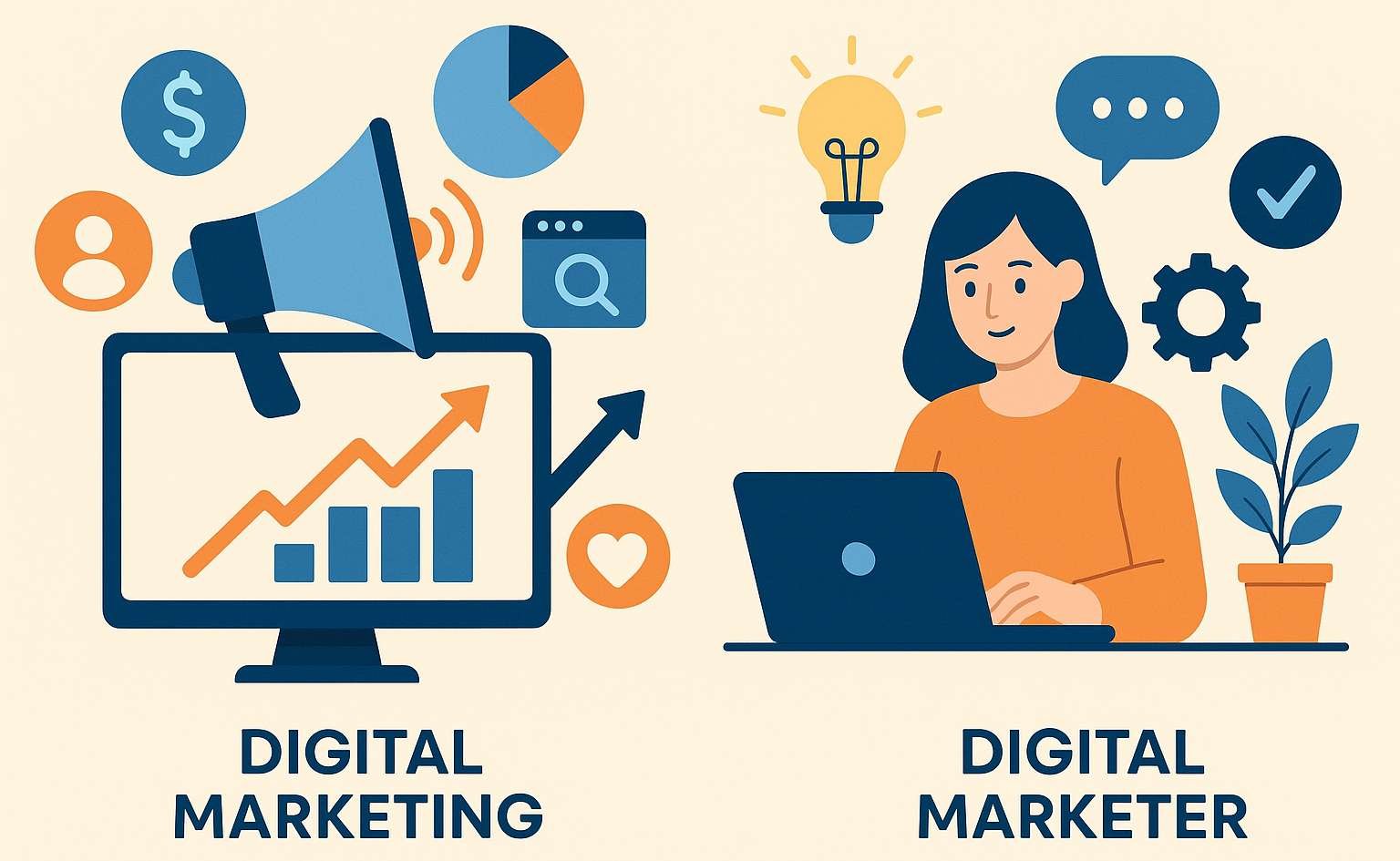
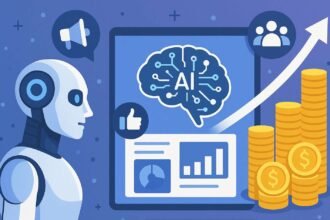
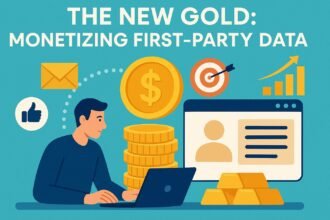

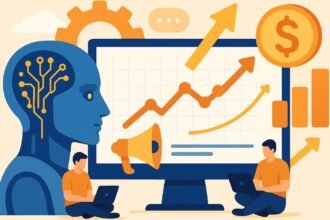

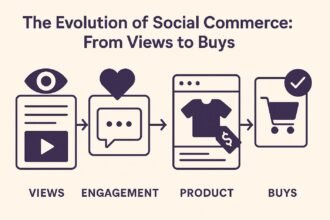
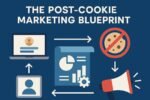
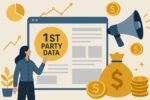
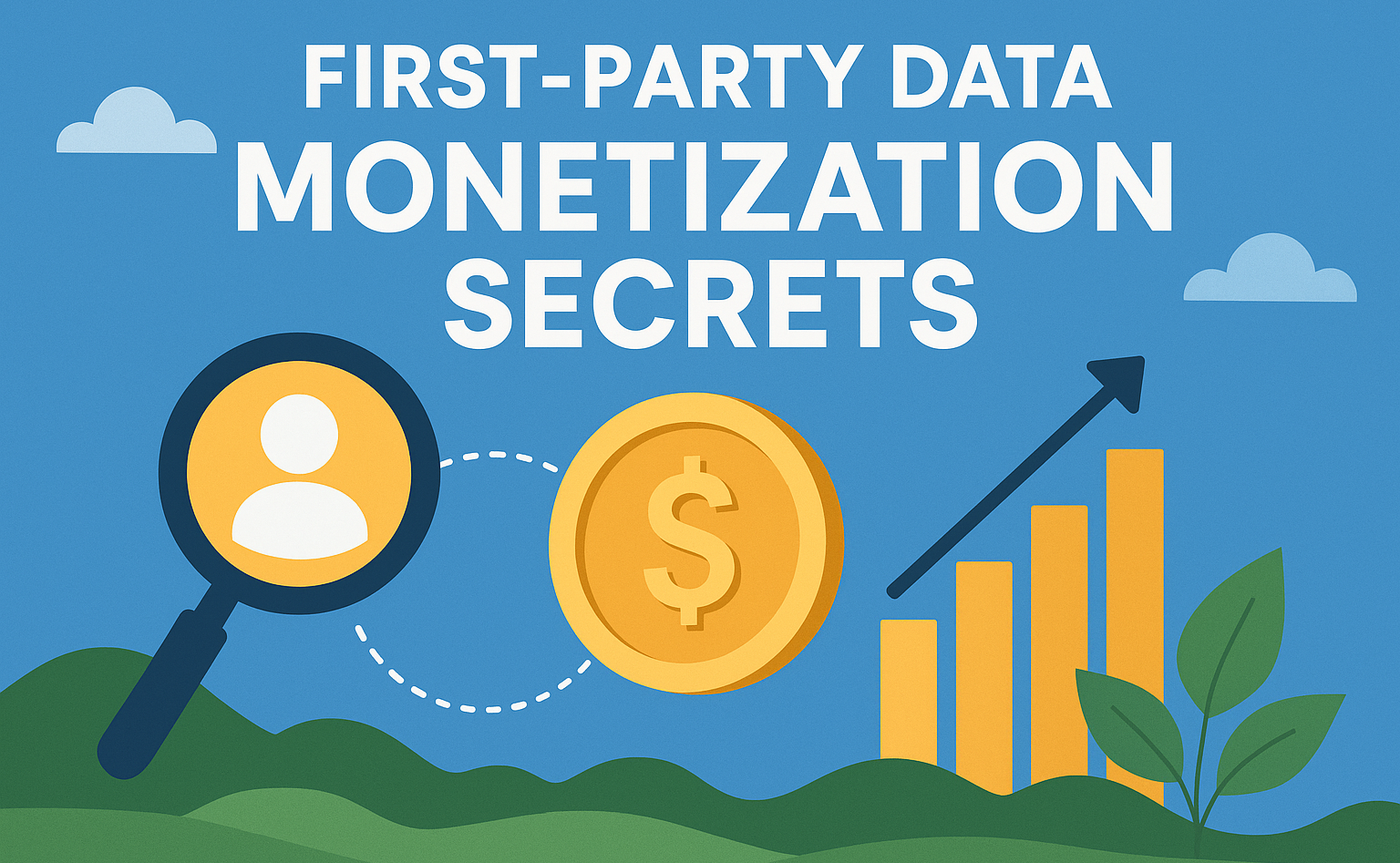

One Comment
good